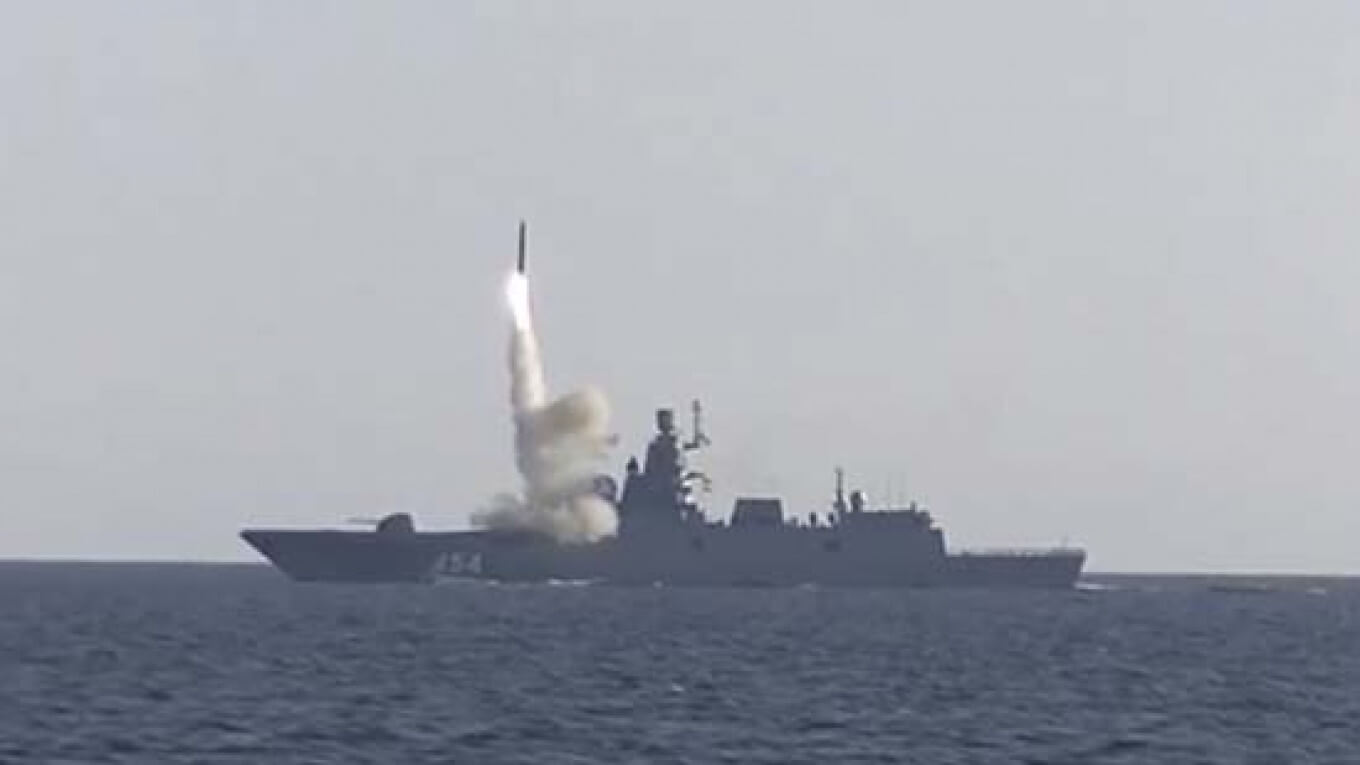The Russian Defence Ministry on Monday said it has successfully tested the Tsirkon Hypersonic Cruise Missile, adding to its already extensive arsenal of weapons.
The Moscow Times mentioned that the Ministry published footage of the launch from Admiral Gorshkov in the White Sea. The missile flew over seven times the speed of sound and hit a target on the coast of the Barents Sea in northern Russia. Celebrating the test, the Ministry stated that it confirms the “tactical and technical characteristics of the Tsirkon missile.” The statement read, “The Tsirkon missile successfully hit a target directly at a range of over 350 kilometres. The flight speed reached nearly Mach 7.” Russia also plans on equipping warships and submarines with the Tsirkon missile.
The decision to develop these missiles was first announced in 2018 by Russian President Vladimir Putin. Since then, it has undergone several tests. In October 2020, Putin celebrated the test-firing as a “great event not just in the life of our armed forces but all of Russia.” Earlier this month, Putin also lauded the missile as a “part of a new generation of missile systems without equal in the world.” He said this would enhance Russia’s defence capabilities significantly.
Meanwhile, the North Atlantic Treaty Organization (NATO) raised concerns about the test, saying that it potentially posed a “greater risk of escalation and miscalculation.” The NATO statement added that “Russia’s new hypersonic missiles are highly destabilising and pose significant risks to security and stability across the Euro-Atlantic area.” It also warned of a “measured” response to Russia’s “growing array of conventional and nuclear-capable missiles.” While assuring that NATO would not “mirror what Russia does,” it said that the allies would “maintain credible deterrence and defence, to protect our nations.”
Over the past few years, Russia has sought to expand its defence capabilities amid rising tensions with the United States and other European countries since the annexation of Crimea in 2014. Consequently, Russia has lauded itself for developing an arsenal that can circumvent the existing defence systems, such as the Sarmat intercontinental missiles and Burevestnik cruise missiles.
Only a few countries, including China, have the technology to develop hypersonic missiles. Experts believe that it provides an edge due to “the combination of speed, manoeuvrability, and altitude of hypersonic missiles,” which “makes them difficult to track and intercept.” Furthermore, a report by Military.com stated that due to the high speed at which the Tsirkon missiles travel, “the air pressure in front of the weapon forms a plasma cloud as it moves, absorbing radio waves and making it practically invisible to active radar systems.” Therefore, it is a cause of concern for the United States and its allies in Europe, which seek to counter Russia’s military prowess.
Russia Successfully Tests Tsirkon Hypersonic Cruise Missile
The Russian Defence Ministry released a statement saying that it has tested the Tsirkon hypersonic cruise missile, which successfully hit a target over 350 kilometres away.
July 22, 2021

SOURCE: RUSSIAN DEFENCE MINISTRY
